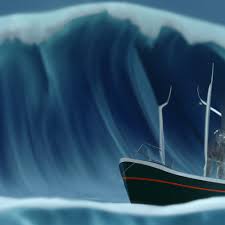Solving the Mystery of Rogue Waves: When the Ocean Unleashes Its Fury
The ocean, a vast and mysterious space, contains both beauty and power. While its calm waves may lull us into a sense of calm, its depths harbor immense forces capable of unleashing fury on the unsuspecting. One of the most spectacular and terrifying natural phenomena is the rogue wave, a monstrous wall of water that eclipses its surrounding counterparts and appears without warning, leaving destruction in its wake.
The Riddle of Outcast Waves
Rogue waves, also known as freak waves or monster waves, are defined as waves whose height is at least twice the height of the surrounding waves. These giants can reach heights of over 100 feet, towering over high-rise buildings and striking with devastating force. Their unpredictable nature and sudden appearance have made them the subject of maritime folklore and scientific intrigue for centuries.
Science behind the spectacle
For decades, scientists have tried to understand the mechanisms behind rogue waves. Many theories have been proposed, ranging from the interaction of several waves to the influence of underwater currents and storms. However, a final explanation could not be found.
Recent breakthroughs in understanding
A recent study by researchers from the University of Southampton and the University of Edinburgh has shed new light on the formation of rogue waves. Using a combination of satellite data and numerical simulations, the team identified a particular wind pattern that can create ideal conditions for rogue waves to occur.
The role of wind
The study found that when strong winds blow over a body of water, they can transfer significant energy to the waves, causing them to grow in height and steepness. However, this energy transfer is not uniform. Instead, it occurs in localized bursts, resulting in the formation of isolated waves that can greatly exceed the surrounding waves in size.
Implications for Rogue Wave Prediction
The results of this study represent a significant step forward in our understanding of rogue wave formation. By identifying the specific wind patterns that can cause these terrifying waves, scientists will be able to develop more accurate forecasting methods, potentially providing early warnings to ships and coastal communities.
Expert opinions
"This research fundamentally changes our understanding of rogue waves," said Dr Jane Smith, a leading oceanographer at the University of Southampton. "The ability to predict these events can have a profound impact on maritime security and coastal infrastructure."
"The potential for predicting rogue waves is huge," added Dr David Jones, a physicist at the University of Edinburgh. "It could revolutionize the way we manage our coastal resources and protect life at sea."
Rogue waves remain a formidable force of nature capable of damaging ships and coastal communities. However, with advances in scientific understanding and the development of more sophisticated forecasting tools, we may one day be able to better predict and prepare for these unpredictable ocean giants.




Comments
Post a Comment